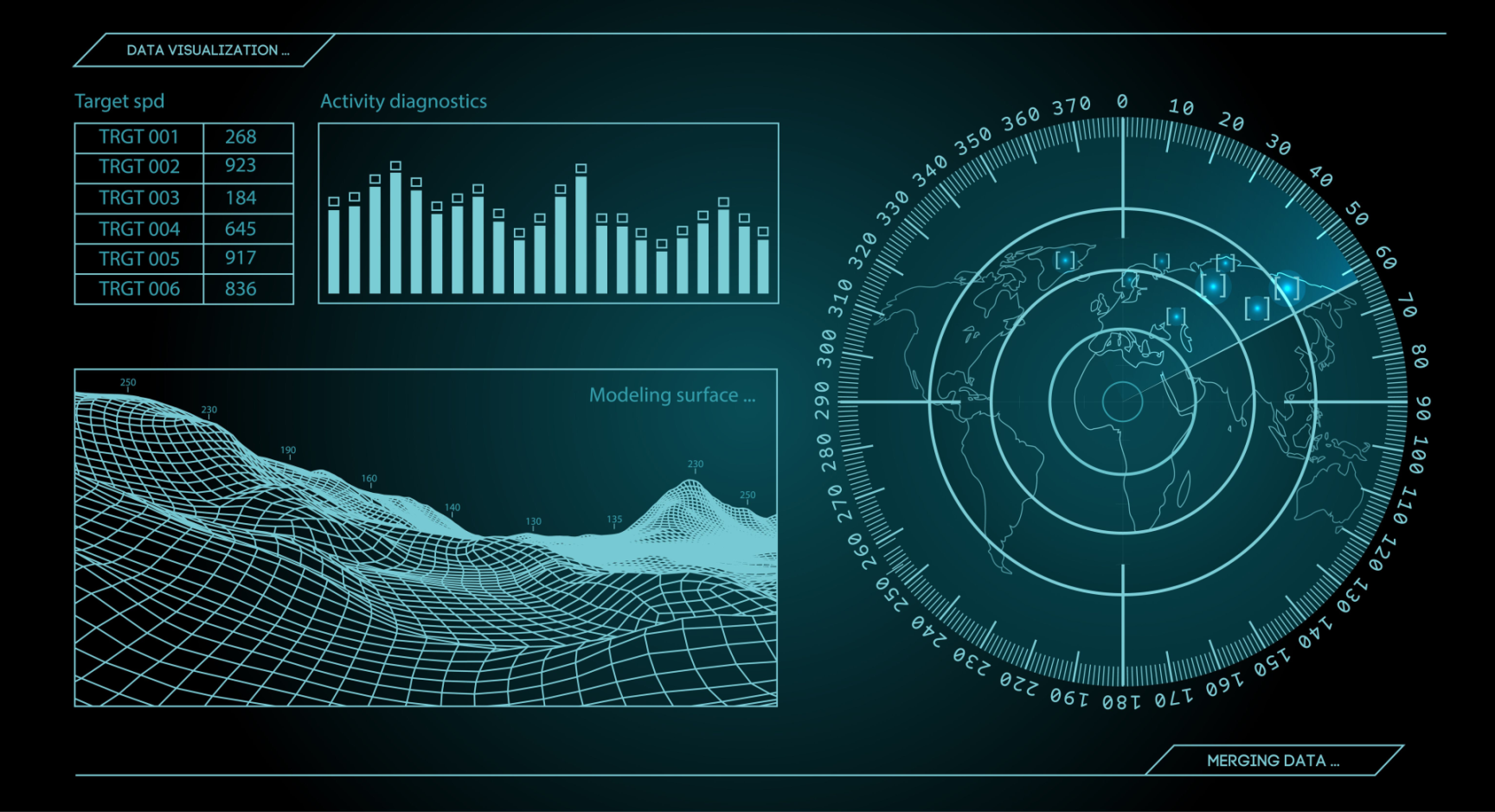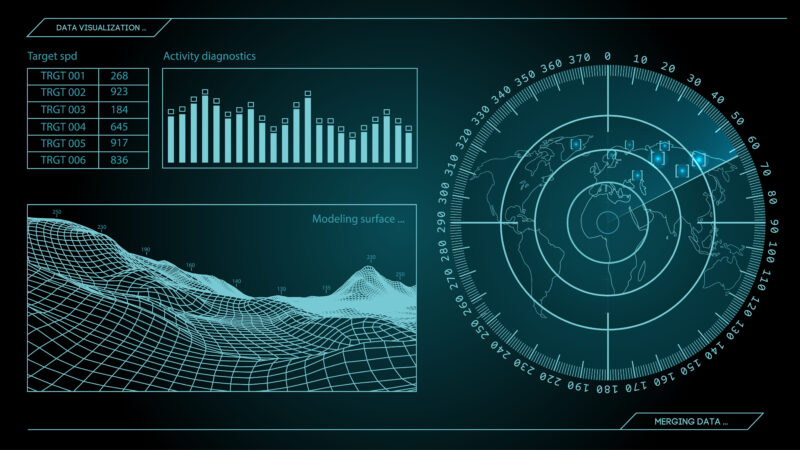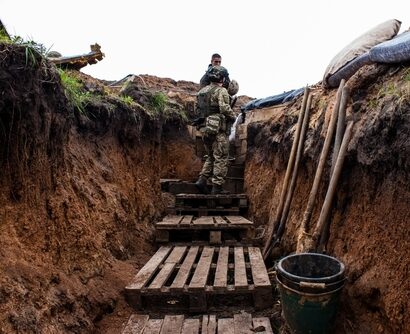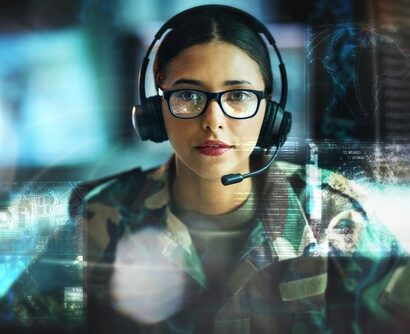Abstract: The “Decade of the Ocean” under the patronage of the UN from January 01, 2021, until December 31, 2030, for the time being, creates facts for the maritime domain, with implications for global foreign and security policy.The networking and aggregation of a wide range of data from marine research sensors penetrate deep into the North Atlantic military-strategic theater of operations. The speed of advance into the last great unknown area of the planet, “the underwater space”, determines climate policy, not security policy. As the ultimate instrument of security policy, a lack of acceptance of the axiom by the military risks damaging credible deterrence. For NATO, the Decade of the Ocean offers more of an opportunity to maintain faith in deterrence.
Problem statement: How to address scientific achievements in the Decade of the Ocean to contain international stability-impairing potential in a military operations area holistically elucidated through ocean research?
Bottom-line-up-front: “Sea Blindness” is the phenomenon of entire generations that must be defeated as soon as possible to address climate change, with the difficulty of not overlooking the security challenges that arise under the ocean in the process. With the Decade of the Ocean, the United Nations is vigorously confronting human “Sea Blindness” and creating hope for the possibility of finding a solution to the climate crisis in a unique habitat.
So what?: NATO member states must be ready to accept the Decade of the Ocean as a challenge already underway and are confronted with the possibility of exploiting the potential of data fusion of publicly available information from the water column for their own operations or even the protection of critical maritime infrastructure.

Source: shutterstock.com/RCVector
The Ocean – Hope for Humankind
“Carl von Clausewitz’s famous dictum, war is the mere continuation of politics by other means, is considered a paradigmatic formulation of the idea that violence can be a rational instrument of politics.”[1] Following the dictum, climate policy would be part of the logic, which is mainly maritime, since the ocean is one of the major key elements to counter human-made climate change.[2] The ocean offers hope for humankind because 80 percent is unexplored and may harbor resources important to human life.[3]
Under the motto “Creating the Ocean We Want,” the UN Decade of Ocean Exploration for Sustainable Development began worldwide on January 01, 2021, following a resolution by the UN General Assembly in 2017.[4], [5] Creating a forward-looking ocean is the goal.[6] This includes the capability to provide useful and actionable climate information for mitigation, adaptation, and early warning systems, as well as information to enable an understanding of the limits of adaptation and attribution of extreme weather events. Climate policy is therefore also obliged to clarify and investigate the consequences for humanity and colliding with security policies in the Decade of Oceans under the patronage of the UN.[7]
Security policies in collective security alliances are linked to the rationale of countering violence as a threat of failing security policy through scalable deterrence.[8] Since its foundation, NATO has excelled in security policy by maintaining its military deterrent potential against challengers. Russia has been clearly named in the present as a security risk to the alliance at the NATO summit in Madrid in 2022.[9]
Security policies in collective security alliances are linked to the rationale of countering violence as a threat of failing security policy through scalable deterrence.
However, deterrence can lose credibility if an adversary becomes convinced that it can damage its opponent’s confidence in its military dominance in a strategic operations area. Russian capabilities for undersea warfare seem to have been developed for this very purpose, which predicts the use of Russian submarines in the North Atlantic in case of conflict.[10] The networking and, consequently, pooling of a variety of data from ocean research sensors, however, penetrates deeply into the North Atlantic military strategic operations area.[11]
In the North Atlantic maritime area of operations, NATO’s ability to act vis-à-vis Russia may be increased and require military capability adjustments by making globally collected data from networked ocean data publicly available for climate research.
Plankton For The Right Whale
Russia would be in a position to benefit militarily from the networking of maritime observation systems. With the simplest of means, Russia could use hydroacoustic data from the water column from hydrophones intended for climate research for its own operations in the North Atlantic.[12], [13]
The networking of deployed marine sensors in the sea area of the North Atlantic allows conclusions to be drawn about the climate development of the planet.[14] Understanding the extent to which a change in the Gulf Stream in the North Atlantic is altering flora and fauna below the water surface allows clarity on measures to be taken to maintain a climate conducive to life.[15]
The networking of deployed marine sensors in the sea area of the North Atlantic allows conclusions to be drawn about the climate development of the planet.
One indicator of habitat change is the behavior of marine mammals.[16] They are particularly sensitive to underwater noise caused by increased shipping traffic and become deaf or lose their way and die on beaches. For this reason, hydrophones are being used more frequently in science and research or for the protection of marine mammals, especially in heavily frequented shipping lanes. As an example serves the port approach of Boston in the USA. Since 2008, six hydrophones have been installed along the traffic separation area for use by the Woods Hole Oceanographic Institution to help protect marine mammal life.[17]
The influence of the acoustic characteristics radiated by ships into the water column is not only relevant for climate research. For the submerged submarine, the detected hydroacoustic characteristics via onboard passive sonar from a vehicle is an unknown contact that must be identified.[18], [19]
Water, with its physical properties, supports the submarine in the submerged state via hydrophones to perceive the hydroacoustic characteristics of other vehicles at an early stage. The special feature results from the different sound velocities in the air and the water. The average speed of sound in water is approximately 1500m/s and is thus almost five times that of air (ca. 343m/s).[20]
Nevertheless, the presumed advantage becomes a disadvantage if a submarine’s own radiated hydroacoustic characteristics, or those of the submarine hunter, reveal the presence in the operations area to their opponent too early.

Source: shutterstock.com/Yootthaphong Phaikhamnam
In the early 1990s, the navies of Germany, Norway, and the Netherlands signed a cooperation agreement to establish an Underwater Noise Measurement Range.[21] The acoustic measurement facility in Heggernes, Norway, measures the acoustic signature of NATO ships and provides an integrated solution to help navies control and maintain the acoustic stealth capabilities of their submarine and surface fleet. This agreement soon discovered that ships could be identified as friend or foe according to their acoustic signatures.[22]
Especially on the system installed for this purpose in Norway, ships or submarines are thus recorded several times by a hydrophone chain to produce a valid, analyzable, hydroacoustic data set. To create a depth of detail that allows readjustment of onboard systems that emit their hydroacoustic characteristics into the water column with too great a loudness over the hull.[23] Increasing self-protection over a low detectable acoustic signature through passive sensors is the goal and vital to surviving underwater warfare as a cat and not ending up as a mouse. The data sets determined are, therefore, subject to classification as secret.[24]
Increasing self-protection over a low detectable acoustic signature through passive sensors is the goal and vital to surviving underwater warfare as a cat and not ending up as a mouse.
Hydrophones are commonly used in marine research. In many cases, the frequencies of ships and submarines are predominantly observed, providing the opportunity to detect and capture the signature of these vessels.

Source: shutterstock.com/Artur Didyk
Analyzable hydroacoustic data from the water column is typically characterized by the existence of at least one automatically-generated time stamp, as well as the location of the hydrophone and the water depth of the sensor at the time the sound was recorded.
Connecting Loose Ends
The mandatory Automatic Identification System (AIS) and its publicly available data on marine traffic correlated with publicly available hydrophones in the context of ocean research, potentially turning the unknown recorded boat in whale research into one with name and ship class.[25], [26]
Consider the approach to Boston harbor, where twelve hydroacoustic data records could be assigned and produced for each incoming ship with an active AIS signal. The hydrophone data set becomes correlatable with the data set from the AIS. The more measurements of hydroacoustic data available on a vessel, the better the data set for the identification process at depth for a submarine without AIS. Even the publication of hydroacoustic data after months still allows their correlation. The entire track history of a vessel is traceable through the use of AIS.[27] Only the track history of the vehicle has to be compared with the time of recording the hydrophone for it.
For any military vehicle or commercial vessel chartered for the military for a sea lift, a hydroacoustic record can be created from any point on Earth that could ultimately strengthen the identification process for a submarine. The only requirement is that the vehicle passes a marine research hydrophone with AIS turned on, and the data is made publicly available, which is the stated goal of the Decade of the Ocean.[28] The protection of the hydroacoustic characteristics of the submarine hunter, to approach the submarine as silently as possible, is no less important.[29] Already in turned on active AIS signal of a warship in coastal waters could diametrically oppose and expose the protection of its signature.[30]
For any military vehicle or commercial vessel chartered for the military for a sea lift, a hydroacoustic record can be created from any point on Earth that could ultimately strengthen the identification process for a submarine.
Submarines need their identification process in the submerged condition exactly, such as processed hydroacoustic data sets, to identify the unknown contacts when ready access to AIS is not available. Receiving AIS data is possible for a submarine only near the surface, with the possibility of receiving communications. Therefore, the better the basic hydroacoustic data on a potential target, the more covertly the submarine can operate. The Russian submarine in the North Atlantic could operate covertly like a sniper, detecting, identifying, and engaging its target in transit to Europe. Every hydroacoustic data set about a possible target makes the sniper’s reference image more accurate in its contrast and definition until it is clearly and unambiguously recognizable.[31]
In addition, the certainty for the sniper and his state client Russia to hit a chartered civilian transport ship of NATO forces from the covert grows. Also recognizable from the crowd would be the transport ship ENDURANCE[32], which in 2020 ensured the transfer of the material of a US Army division in the Exercise European Defender. Its hydroacoustic data set could have been added to the hydrophones system employed for marine research in the approaches of the unloading port in Bremerhaven, Germany.[33]
Confidence in the ability of NATO forces to safely cross the North Atlantic is shaken, and conventional deterrence against Russia is damaged. But this first requires mastering a challenge in the Decade of the Ocean under the patronage of the UN to make knowledge and technologies accessible to all.[34] Nevertheless, NATO’s true potential lies in creating a predictable and more comprehensive understanding of the theater of operations to turn the Russian cat back into a mouse.
Ocean Floodlight
The operational freedom of NATO naval forces in the North Atlantic is critical to maintaining a credible deterrent against Russia, and networked maritime observation systems strengthen NATO on the operational level.[35], [36]
Russia’s maritime defense concept, outside the North Fleet’s home waters in the Barents Sea, relies on forward defense by submarines in the Atlantic. The Russian submarines are capable of threatening the secured military sea lift from the American to the European continent. The capability to locate Russian submarines in advance, or even to anticipate their approximate location, is therefore critical to NATO’s operational planning and affects the Alliance’s maritime force structure in the Atlantic.
Continuing to use the metaphor of the sniper in the North Atlantic, it only helps to deny the Russian submarine’s ability to hide below the surface of the water. The Decade of the Ocean aims to penetrate deep into the water column through data collection, thereby reducing the submarine’s ability to seek cover.[37] In the Digital Twin Ocean challenge, all data from the world’s oceans will be brought together to simulate climate impacts using predictive models.[38] Data collection includes hydrophones, temperature and salinity, underwater sound propagation conditions, and more. The Digital Twin Ocean is a consistent, high-resolution, multi-dimensional and near real-time virtual representation of the ocean, combining ocean observations, artificial intelligence, advanced modelling operating on high-performance computers and is openly accessible to the public, and on which simulations of “what-if” scenarios can be run.
The pooling of data has the potential to virtually drain the water from the North Atlantic. Combined with meeting the first challenge of the Decade of the Ocean to make knowledge and technologies accessible to all, a global overall picture of the situation from the ocean floor to the water surface appears possible. To grasp their expected level of detail and impact on the North Atlantic operations area, it helps to look at the retrievable data already provided by the Global Ocean Observing System from a wide variety of sensors.[39], [40]
In this context, the mere view of the water surface distorts the maritime reality of underwater warfare. The sensors might transmit their results at the water surface, but the data is collected from the seabed to the water surface. Exactly in the terrain where a submarine in the role of sniper hopes to hide.
Ocean observing systems are increasing, and the configuration of measurement sensors of individual systems is becoming more comprehensive. Even autonomous ocean gliders can already be equipped with hydrophones and are offered market-ready.[41], [42] A detection by marine research sensors of submarines in the North Atlantic via their own radiated hydroacoustic characteristics seems increasingly feasible. NATO probably could not resist the thought of creating the world’s largest interconnected acoustic surveillance system, which would dwarf the Cold War-era Sound Surveillance System (SOSUS) system for monitoring Soviet submarine activity on the Greenland-Iceland United-Kingdom line.[43], [44] Especially in light of NATO’s establishment of a Critical Undersea Infrastructure Protection Center.[45]
NATO probably could not resist the thought of creating the world’s largest interconnected acoustic surveillance system, which would dwarf the Cold War-era Sound Surveillance System system for monitoring Soviet submarine activity on the Greenland-Iceland United-Kingdom line.
The missing element for identification would be the hydroacoustic characteristics of a Russian submarine to identify it. The question is whether the NATO Alliance truly lacks a reference data set. The potential Russian adversary in the North Atlantic relies primarily on nuclear-powered and conventional submarines that, like the OSCAR-II, have been in service with the Russian Northern Fleet since the Cold War. Even on Russia’s newer submarines, initial knowledge of hydroacoustic data should be available in the NATO alliance.[46], [47] Rather, the Digital Twin Ocean of the Decade of the Ocean requires another Digital Twin Ocean as a military situational picture, augmented by all the hydroacoustic characteristics of Russian military maritime units known to NATO member states.
A military Digital Twin Ocean, reflected in an overall NATO situational picture, would allow a situational picture to be interpreted by looking at the water and adding a cross-view. The ability to detect and track Russian submarines on their way from the Barents Sea into the North Atlantic using climate research hydrophones is probably a quantum leap for NATO’s operational planning. Digital predictive models for undersea warfare operational planning based on data collection in the Decade of Ocean from the North Atlantic.[48]
The fact that the data of the Digital Twin Ocean are just as publicly available for Russia seems to equalize the advantage for NATO from ocean research for sustainable development at first glance. But a deeper look into the results of beginning marine research about the propagation of sound in the water column also benefits the submarine hunter and not always the hunted submarine.[49]
Waterborne sound does not propagate linearly. In principle, waterborne sound waves can be perceived over long distances with the appropriate transmission power over an uninterrupted stretch of water.[50] Influencing variables such as temperature, salinity, and pressure cause the sound beams to be deflected as the water depth increases. As a result, even if the distance is close, the sound is not transmitted directly.[51], [52] This also applies to the propagation of hydroacoustic characteristics.
The exact knowledge of the waterborne sound in the operation area of the North Atlantic for underwater warfare is consequently a crucial element. Marine research on the change and propagation conditions of waterborne sound due to climate change in the North Atlantic provides match answers for the submarine hunter.[53] The precise knowledge of the propagation conditions of the sound will allow the best possible coordinated deployment of the necessary sensors of the NATO forces for the transit under the threat of a Russian submarine on the North Atlantic.[54]
The precise knowledge of the propagation conditions of the sound will allow the best possible coordinated deployment of the necessary sensors of the NATO forces for the transit under the threat of a Russian submarine on the North Atlantic.
The March 2022 research report, Ocean Sound Propagation in a Changing Climate: ‘Global Sound Speed Changes and Identification of Acoustic Hotspots’, is, to the best of the researcher’s knowledge, the first global data set on climate-induced changes in sound speed in the water.[55] The continuation of civil research in this particular subject area is almost certain, as its importance for the world climate is vital. Scientists are searching for the normal behavior of the ocean by combining all information and measurement results from the water column. On the other hand, the military is looking for deviation from the norm from the data gathered from the water column. The deviation from the norm would be the detection of, for example, a hydroacoustic signature of a submarine.
A military digital twin ocean would thus significantly improve the situation picture from the water column for maritime operations. The battlefield on the Atlantic is thus much easier to anticipate through accessible and freely available information.
The Russian submarine would already be pushed into a corner in NATO’s operational planning. NATO forces with additional mobile sensors for underwater warfare could be optimally deployed along the planned route across the Atlantic.[56]
NATO’s operational planning level of maritime operations on the North Atlantic will be massively strengthened by the possibility of reverting to such a detailed situation picture. It will be much more difficult for the Russian submarine to hide in the North Atlantic.[57]
The Beginning Of The End?
Mastering the challenge of a global ocean observing system in a timelier manner, to create a forward-looking ocean in the Decade of Ocean, will challenge the use of nuclear submarines to conduct operations in the North Atlantic.[58] Unfortunately, from the submarine hunter’s perspective, the underwater environment provides a cornered Russian submarine with an emergency exit to prevent detection. This is the so-called thermocline in the ocean, which occurs when there is a rapid change in temperature in the water column.[59] A thermocline in the ocean deflects waterborne sound because of its properties, so a submarine, for example, could use the thermocline to mask its position from sensors on the other side.[60]
Unfortunately, from the submarine hunter’s perspective, the underwater environment provides a cornered Russian submarine with an emergency exit to prevent detection.
The global ocean observing system has the potential to close the emergency exit for a nuclear-powered submarine to evade detection by hydrophones or active sonar from the submarine hunter below the thermocline.[61] For the climate crisis, humans understand these deviations because of the steady rise in temperatures after looking at a thermometer and then recognizing the necessity of this action.[62] Consequently, the ocean’s temperature needs to be permanently monitored to capture the consequences of the increase in global temperature on our planet.[63] Therefore, it is not enough to measure the ocean’s temperature at the surface or down to the thermocline. Knowledge about the temperature change between the warm surface water and the cold deep water with effects on flora and fauna is crucial.[64] Exactly the room that symbolizes the emergency exit in the detection of submarines in Underwater Warfare.
Nearly all sensors employed in the ocean for climate research continuously measure the ocean’s temperature from the water surface to the seabed. In the course of a day, up to 100,000 observations, the value of the temperature from the ocean from the respective water depth and sea area is deposited.[65] Changes in temperature in the Atlantic of up to 0.001 degrees Celsius can be detected as a deviation from the normal behavior in the ocean by the sensor technology already in use.[66]
This is exactly the deviation from standard behavior that should also be of great interest to the military. Especially with deviations of the temperature below the thermocline in cold deep water. From the point of view of the evaluation of the measurement results, a recorded unusual temperature difference cannot be just a measurement error after all.
The functional operation of the so-called Argo-drifters and gliders (example from hurricane research), visualizes the principle of action as well as their deployment of sensor technology in the North Atlantic.

Source: shutterstock.com/Maria T Hoffman
According to public sources, nuclear-powered submarines need a lot of cooling water[67] to constantly cool down the reactor[68] via a cooling circuit system. According to a release of an unreferenced Central Intelligence Agency report by GlobalSecurity.org, a nuclear-powered submarine can change the ambient temperature in ocean water by as much as 10 degrees Celsius around it.[69] What oceanography may perceive in nuances as a measurement error may allow for military exploitation in the North Atlantic. The temperature deviation of up to 10 degrees Celsius from the average measurement result of the seawater is the deviation from the standard behavior, which must be considered more closely in the future. The cooling requirements for a reactor floating in the ocean are hard to imagine being reduced to such an extent that temperature sensors with an accuracy of 0.001 degrees, such as the ARGO drifter, could be deceived.[70]
A nuclear-powered submarine can change the ambient temperature in ocean water by as much as 10 degrees Celsius around it.
From NATO’s perspective, data collection by Russian naval forces should be considered beyond basic hydroacoustic data sets. This would include the thermal signature of nuclear-powered submarines across a range of operating profiles to understand how much thermal energy would be emitted, and what deviation it would create in the local water column.
But there is further potential in ocean research that could erode confidence in the ability of nuclear submarines to prevail in the operations area. A Norwegian research team has succeeded in using undersea cables as antennas to search for whales. This became possible because whales spread their songs on very low frequencies. They can therefore be heard over long distances and cause the seabed data lines to vibrate. By sending the light of a specific wavelength through the unused optical fibers, the researchers at the University of Trondheim were able to register these vibrations from the shore. The method proved to be effective. The researchers could not only distinguish the different types of whale songs but also determine the animals’ position on a 120-kilometer-long optical fiber.[71]
In view of the large number of prevailing sensors in the Atlantic and their timelier networking, the navies of the NATO members are compelled to deal intensively with what is probably the largest data collection from the ocean in the history of humankind to date.[72] Existing NATO weapon systems should be reviewed for their value in an increasingly transparent operations area. The legitimacy of the need to weigh or make fundamental military capability adjustments is provided by the Decade of the Ocean under the auspices of the UN.
Conclusion
The goal of creating a forward-looking ocean and the challenge of making knowledge and technologies accessible to all allows the collection of hydroacoustic characteristics that become strategically relevant for Russia in tactical operations against the NATO alliance.[73]
To shake confidence in a sea lift across the North Atlantic and to weaken the NATO land forces’ combat capability on the European continent can nevertheless be achieved only at great risk to Russia. The power of climate research is greater and, in its overall understanding of causation, allows not only the resort to hydrophones that can be used for military purposes.
To shake confidence in a sea lift across the North Atlantic and to weaken the NATO land forces’ combat capability on the European continent can nevertheless be achieved only at great risk to Russia.
Rather, the Allies’ ability to deploy various sensors and military capabilities is reminiscent of the turn of submarine warfare in the Atlantic in July 1942, where the German submarine changed to the role of the hunted. In the present, it is not the invention of the Radar or the Sonar, but in the future, the option of being able to prepare virtually at the operational level for the defense of the Atlantic Bridge by means of a Digital Twin Ocean in the operational planning.[74], [75] From this arises the strength of NATO to let deployed Russian submarines play by the rules of the submarine hunter. The possible beginning of the end of Russia’s perceived and publicly articulated superiority in underwater warfare.[76]
Complementing the forward-looking ocean for climate research requires networking all ocean observing systems that screen the unknown ocean space of about 80 percent, piece by piece. A submarine’s effectiveness is dependent upon its ability to remain undetected, so anything that increases its ability to be detected is of great concern. Given the expected research results from the Decade of the Ocean, entire maritime military strategies could be called into question. Attempting to preserve proven maritime weapon systems of deterrence from the past and present seems misguided. It would be misguided to assume that maritime strategies do not need to be adjusted if they are only derived from a 20 percent known operations area. The sanctioned Russia would probably be unable to make comprehensive capability adjustments to its submarine forces and risk losing an arms race in the underwater domain.[77]
The speed of advance into the last great unknown area of the planet determines climate policy, not security policy.[78] As the ultimate instrument of security policy, a lack of acceptance of the axiom by the military risks damaging credible deterrence. For NATO, the Decade of the Ocean offers more of an opportunity to maintain faith in deterrence. NATO member states must be ready to accept the Decade of the Ocean as a challenge already underway.
Interfering with climate research for military reasons by preventing data collection from the ocean is an affront to humanity. Since, according to Barack Obama, we are the last generation with the ability to address climate change. Can war then also be the mere continuation of failed climate policies?
Roland Spahr, German Navy, served in a variety of military assignments on various naval vessels. In his military career, he was assigned as a Commanding Officer of the OSTE class (intelligence vessel) and, in 2020, led the German Armed Forces’ first maritime joint intelligence, surveillance and reconnaissance task group at sea in the Northern Flank area. Publications in the “Marineforum” titled “Submarines: cat-and-mouse game at sea”; Director of the German Navy’s Hydroacoustic Analysis Center and is currently a participant in the Joint Canadian Staff Program at the Canadian Forces College in Toronto. His research interest focuses on undersea warfare involving achieved technological innovations in the hydroacoustic spectrum and the resulting consequences and possibilities of maritime power projection. The views contained in this article are the author’s alone and do not represent the views of the German armed forces.
[1] Tobias Wille, “Politik und ihre Grenzen in Clausewitz’ Denken über den Krieg,” Politische Vierteljahresschrift 62, no. 1 (March 2021): 45, https://link.springer.com/10.1007/s11615-020-00269-9.
[2] United Nations, “LIFE BELOW WATER: WHY IT MATTERS,” July 14, 2019, https://www.un.org/sustainabledevelopment/wp-content/uploads/2019/07/14_Why-It-Matters-2020.pdf.
[3] Emily Petsko, “Why Does so Much of the Ocean Remain Unexplored and Unprotected?,” June 08, 2020, https://oceana.org/blog/why-does-so-much-ocean-remain-unexplored-and-unprotected/.
[4] UNESCO, “United Nations Decade of Ocean Science for Sustainable Development (2021-2030)” (UNESCO, n.d.), https://en.unesco.org/ocean-decade#:~:text=The%20United%20Nations%20has%20proclaimed,support%20countries%20in%20creating%20improved.
[5] United Nations, “71/312. Our Ocean, Our Future: Call for Action,” July 14, 2017, https://documents-dds-ny.un.org/doc/UNDOC/GEN/N17/207/56/PDF/N1720756.pdf?OpenElement.
[6] United Nations, “Implementation of the Global Climate Observing System,” November 17, 2022, https://unfccc.int/documents/624131.
[7] UNESCO, Ocean Decade Challenge Number 7: Expand the Global Ocean Observing System, 2021, https://www.youtube.com/watch?v=Npz-5yxcm5A.
[8] NATO, “Deterrence and Defence,” September 12, 2022, https://www.nato.int/cps/en/natohq/topics_133127.htm.
[9] NATO, “NATO 2022 STRATEGIC CONCEPT,” June 29, 2022, https://www.nato.int/strategic-concept/index.html, 4, Top 8.
[10] Leona Alleslev, “NATO ANTI-SUBMARINE WARFARE: REBUILDING CAPABILITY, PREPARING FOR THE FUTURE,” October 13, 2019, https://www.nato-pa.int/document/2019-nato-anti-submarine-warfare-rebuilding-capability-preparing-future-alleslev-150-stc, 5, Top 24
[11] GOOS, “Ocean Observing System Report Card 2022 GOOS Observations Coordination Group,” Homepage, December 14, 2022, https://www.ocean-ops.org/reportcard/.
[12] NOAA, “What Is a Hydrophone?,” What is a hydrophone, February 26, 2021, https://oceanservice.noaa.gov/facts/hydrophone.html#:~:text=A%20hydrophone%20is%20an%20underwater,reproduction%2C%20and%20to%20seek%20prey.
[13] CTBTO, “Hydroacoustic Monitoring | CTBTO,” HYDROACOUSTIC MONITORING, March 20, 2023, https://www.ctbto.org/our-work/monitoring-technologies/hydroacoustic-monitoring.
[14] Met Office, “What Is the Gulf Stream?,” What is the Gulf Stream?, December 14, 2022, https://www.metoffice.gov.uk/weather/learn-about/weather/oceans/what-is-the-gulf-stream#:~:text=Originating%20at%20the%20tip%20of,than%20it%20would%20otherwise%20be.
[15] NOAA, “Tides and Oceans What Is the Gulf Stream?,” Tides and Oceans What Is the Gulf Stream?, September 28, 2022, https://scijinks.gov/gulf-stream/.
[16] Frances M.D. Gulland et al., “A Review of Climate Change Effects on Marine Mammals in United States Waters: Past Predictions, Observed Impacts, Current Research and Conservation Imperatives,” Climate Change Ecology 3 (December 2022): 100054, https://doi.org/10.1016/j.ecochg.2022.100054.
[17] E. Paul Oberlander, “Silent Buoy,” Silent buoy, August 07, 2009, https://www.whoi.edu/multimedia/silent-buoy/.
[18] EMSA, “SOUNDS: STATUS OF UNDERWATER NOISE FROM SHIPPING” (EMSA, 2018.), https://www.emsa.europa.eu/publications/reports/item/4569-sounds.html, 14, Top 3.1.
[19] Editors of Encyclopaedia Britannica, “Passive Sonar” (Britannica, 2021.), https://www.britannica.com/technology/sonar.
[20] Bundesverband Geothermie, “SCHALLGESCHWINDIGKEIT,” February 2021, https://www.geothermie.de/bibliothek/lexikon-der-geothermie/s/schallgeschwindigkeit.html.
[21] Brüel & Kjær, “THE ROYAL NORWEGIAN NAVY UNDERWATER ACOUSTIC NOISE MEASUREMENT OF VESSELS,” December 14, 2022, https://www.bksv.com/-/media/literature/Case-Study/bo0487.ashx.
[22] Brüel & Kjær, “THE ROYAL NORWEGIAN NAVY UNDERWATER ACOUSTIC NOISE MEASUREMENT OF VESSELS,” December 14, 2022, https://www.bksv.com/en/customers/defence/the-royal-norwegian-avy#:~:text=The%20Royal%20Norwegian%20Navy%3A%20Underwater%20Acoustic%20Measurements%20The,And%20Br%C3%BCel%20%26%20Kj%C3%A6r%20plays%20a%20key%20role.
[23] EMSA, “SOUNDS: STATUS OF UNDERWATER NOISE FROM SHIPPING,” 2018, 17 – 19.
[24] Brüel & Kjær, “THE ROYAL NORWEGIAN NAVY UNDERWATER ACOUSTIC NOISE MEASUREMENT OF VESSELS,” 2004, https://www.bksv.com/-/media/literature/Case-Study/bo0487.ashx, 5, a practical example…, first sentence.
[25] GFW, “What Is the Automatic Identification System (AIS)? | Global Fishing Watch,” AIS, last accessed March 20, 2023, https://globalfishingwatch.org/faqs/what-is-ais/.
[26] MarineTraffic, “Marine Traffic,” December 14, 2022, https://www.marinetraffic.com/en/ais/home/centerx:-33.3/centery:41.5/zoom:3.
[27] MarineTraffic, “Marine Traffic Endurance,” December 14, 2022, https://www.marinetraffic.com/en/ais/home/shipid:425662/zoom:10.
[28] United Nations, “Decade Coordination Office for Ocean Observing,” Endorsed Ocean Decade Actions (IOC-GOOS Office – France, 2021.), https://www.oceandecade.org/actions/decade-coordination-office-for-ocean-observing/.
[29] Brüel & Kjær, “THE ROYAL NORWEGIAN NAVY UNDERWATER ACOUSTIC NOISE MEASUREMENT OF VESSELS,” 2004.
[30] MarineTraffic, “Marine Traffic Prince of Wales,” December 14, 2022, https://www.marinetraffic.com/en/ais/details/ships/shipid:6360166/mmsi:235118002/imo:4907907/vessel:PRINCE_OF_WALES.
[31] Kozaczka and Domagalski.
[32] MarineTraffic, “Marine Traffic Endurance.”
[33] BSH, “Underwater Sound,” MarinEARS Information System, December 14, 2022, https://www.bsh.de/EN/TOPICS/Offshore/Environmental_assessments/Underwater_sound/underwater_sound_node.html.
[34] United Nations, KDM “Herausforderungen Der Ozeandekade Fähigkeiten, Wissen Und Technologien Für Alle,” SKILLS, KNOWLEDGE AND TECHNOLOGIES FOR ALL, 2021. https://ozeandekade.de/herausforderungen/.
[35] Leona Alleslev, “NATO ANTI-SUBMARINE WARFARE: REBUILDING CAPABILITY, PREPARING FOR THE FUTURE,” 2, Top 6,7 and 8, October 13, 2019, https://www.nato-pa.int/document/2019-nato-anti-submarine-warfare-rebuilding-capability-preparing-future-alleslev-150-stc.
[36] Andrew S. Harvey, “The Levels of War as Levels of Analysis” (Army University Press, December 2021), https://www.armyupress.army.mil/Journals/Military-Review/English-Edition-Archives/November-December-2021/Harvey-Levels-of-War/#:~:text=The%20operational%20level%20of%20war%20involves%20planning%20and%20execution%20of,of%20campaigns%20and%20major%20operations.
[37] United Nations, KDM, “Herausforderungen Der Ozeandekade Digitaler Zwilling Des Ozeans,” Digital Twin Ocean, n.d., https://ozeandekade.de/herausforderungen/.
[38] Mercator Ocean, “Digital Twin of the Ocean,” n.d., https://www.mercator-ocean.eu/en/digital-twin-ocean/.
[39] GOOS, “Ocean Observing System Report Card 2022 GOOS Observations Coordination Group.”
[40] Mercator Ocean, “Digital Twin Ocean A Leap in Ocean Knowledge and Sustainable Action,” Digital Twin Ocean, 2022, https://digitaltwinocean.mercator-ocean.eu/.
[41] United Nations, “Implementation of the Global Climate Observing System.”
[42] United Nations.
[43] University of Rhode Island, “The Cold War: History of the SOund SUrveillance System (SOSUS),” December 14, 2022, https://dosits.org/people-and-sound/history-of-underwater-acoustics/the-cold-war-history-of-the-sound-surveillance-system-sosus/.
[44] Tarun Kumar, “The GIUK Gap ‘ The Forgotten Strategic Maritime Way,’” June 24, 2021, https://thesocialtalks.com/news-analysis/the-giuk-gap-the-forgotten-strategic-maritime-way/.
[45] ESD, “NATO Establishes Centre to Protect Critical Underwater Infrastructure,” European Security & Defence, February 21, 2023, https://euro-sd.com/2023/02/news/29759/nato-establishes-centre-to-protect-critical-underwater-infrastructure/.
[46] NTI, “Russia Submarine Capabilities,” The Nuclear Threat Initiative (blog), March 06, 2023, https://www.nti.org/analysis/articles/russia-submarine-capabilities/.
[47] Brad Lendon, “Russian Navy’s Massive Submarine Could Set the Stage for ‘a New Cold War’ in the Oceans,” CNN News, 24. Jul 22, https://www.cnn.com/2022/07/23/europe/russia-belgorod-submarine-nuclear-torpedo-intl-hnk-ml/index.html.
[48] Mercator Ocean, “What Is a Digital Twin of the Ocean?,” 3D- Animation of the Ocean, 2022, https://www.youtube.com/watch?v=2EzH8o0t_1k.
[49] National Oceanic and Atmospheric Administration US Department of Commerce, “What Is Sonar?,” March 20, 2023, https://oceanservice.noaa.gov/facts/sonar.html.
[50] Ivor Nissen, “Adaptive Systems for Mobile Underwater Communications with a P(Oste)Riori Channel Knowledge” (Forschungsanstalt der Bundeswehr für Wasserschall und Geophysik (FWG), December 13, 2012), https://papers.ssrn.com/sol3/papers.cfm?abstract_id=2188240.
[51] OW US EPA, “Indicators: Salinity,” Overviews and Factsheets, November 27, 2013, https://www.epa.gov/national-aquatic-resource-surveys/indicators-salinity.
[52] Ivor Nissen and Bodo Nolte, “Schall Und Schwingungen Wellen Und Turbulenz in Sensibler Umgebung,” September 20, 2017, https://www.researchgate.net/publication/269873931_Schall_und_Schwingungen_Wellen_und_Turbulenz_in_sensibler_Umgebung.
[53] Alice Affatati, Chiara Scaini, and Stefano Salon, “Ocean Sound Propagation in a Changing Climate: Global Sound Speed Changes and Identification of Acoustic Hotspots,” Earth’s Future 10, no. 3 (March 2022), https://doi.org/10.1029/2021EF002099.
[54] Leona Alleslev, “NATO ANTI-SUBMARINE WARFARE: REBUILDING CAPABILITY, PREPARING FOR THE FUTURE,” October 13, 2019, https://www.nato-pa.int/document/2019-nato-anti-submarine-warfare-rebuilding-capability-preparing-future-alleslev-150-stc, Map 3.
[55] Affatati, Scaini, and Salon, “Ocean Sound Propagation in a Changing Climate.”
[56] Leona Alleslev, “NATO ANTI-SUBMARINE WARFARE: REBUILDING CAPABILITY, PREPARING FOR THE FUTURE,” October 13, 2019, https://www.nato-pa.int/document/2019-nato-anti-submarine-warfare-rebuilding-capability-preparing-future-alleslev-150-stc.
[57] Andrew S. Harvey, “The Levels of War as Levels of Analysis” (Army University Press, December 2021), https://www.armyupress.army.mil/Journals/Military-Review/English-Edition-Archives/November-December-2021/Harvey-Levels-of-War/#:~:text=The%20operational%20level%20of%20war%20involves%20planning%20and%20execution%20of,of%20campaigns%20and%20major%20operations.
[58] United Nations, KDM, “Herausforderungen Der Ozeandekade Globales Ozeanbeobachtungssystem,” GLOBAL OCEAN OBSERVING SYSTEM, n.d., https://ozeandekade.de/herausforderungen/.
[59] NOAA, “What Is a Thermocline?,” July 15, 2022, https://oceanservice.noaa.gov/facts/thermocline.html#:~:text=A%20thermocline%20is%20the%20transition%20layer%20between%20the%20warmer%20mixed,a%20sudden%20change%20in%20temperature.
[60] Dartmouth Undergraduate Journal of Science, “The Underwater Propagation of Sound and Its Applications – Dartmouth Undergraduate Journal of Science,” Dartmouth Undergraduate Journal of Science, March 11, 2012, https://sites.dartmouth.edu/dujs/2012/03/11/the-underwater-propagation-of-sound-and-its-applications/.
[61] NOAA, “What Is Sonar? Sonar Uses Sound Waves to ‘see’ in the Water,” February 26, 2021, https://oceanservice.noaa.gov/facts/sonar.html#:~:text=Active%20sonar%20transducers%20emit%20an,the%20strength%20of%20the%20signal.
[62] Jan Morlock, “Why Is Global Warming so Important?,” November 15, 2022, https://umra.umn.edu/news/2021-10-forum-summary.
[63] UNESCO, “Monitoring the Ocean,” December 14, 2022, https://en.unesco.org/themes/monitoring-ocean.
[64] United Nations, “How Is Life in the Sea Affected by Climate Change?,” December 14, 2022, https://www.un.org/en/climatechange/science/climate-issues/ocean-impacts.
[65] GOOS, “Ocean Observing System Report Card 2022 GOOS Observations Coordination Group,” 2022.
[66] Argo, “What Does an Argo Float Do?,” December 14, 2022, https://argo.ucsd.edu/how-do-floats-work/.
[67] GlobalSecurity.org, “System Of Detection Of Wake (Systema Obnaruzhenya Kilvaternogo Sleda SOKS),” December 14, 2022, https://www.globalsecurity.org/military/world/russia/soks.htm.
[68] Mil Tec, “Why Nuclear Submarines Cannot Touch the Bottom,” December 14, 2022, https://www.youtube.com/shorts/iQyDxkk2SxM.
[69] GlobalSecurity.org, “System Of Detection Of Wake (Systema Obnaruzhenya Kilvaternogo Sleda SOKS).”
[70] Argo, “On the Top of Every Argo Float Is a CTD Which Measures Temperature within an Accuracy of 0.001 Degree C.”
[71] Kittinat Taweesintananon et al., “Distributed Acoustic Sensing for Near-Surface Imaging Using Submarine Telecommunication Cable: A Case Study in the Trondheimsfjord, Norway,” GEOPHYSICS 86, no. 5 (September 1, 2021): B303–20, https://doi.org/10.1190/geo2020-0834.1.
[72] United Nations, “The Decade of the Ocean,” The Decade of the Ocean, January 01, 2021, https://oceandecade.org/.
[73] Britannica, “Tactics | Definition, Examples, History, & Facts | Britannica,” accessed March 20, 2023, https://www.britannica.com/topic/tactics.
[74] Clay Blair, Hitler’s U-Boat War: The Hunted: 1942-1945, 1st Edition (Random House, 1998).
[75] Harvey, “The Levels of War as Levels of Analysis,” December 2021.
[76] Dan Arkin, “Putin Claims Russia Is Capable of Detecting and Attacking Any Underwater or Above-Water Enemy,” July 27, 2021, https://www.israeldefense.co.il/en/node/51108.
[77] “EU Sanctions Map,” https://www.sanctionsmap.eu/#/main.
[78] OCEAN Ops and GOOS Observations Coordination Group, “Ocean Observing System Report Card 2021,” Ocean Observing System Report Card 2021, 2021, https://www.ocean-ops.org/reportcard2021/.






